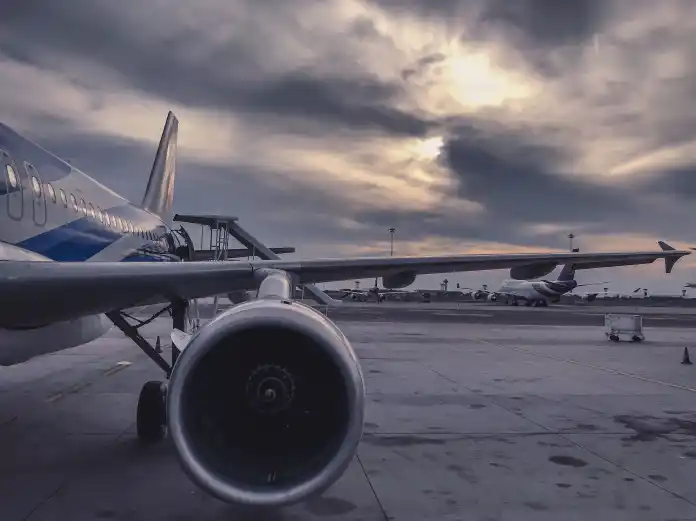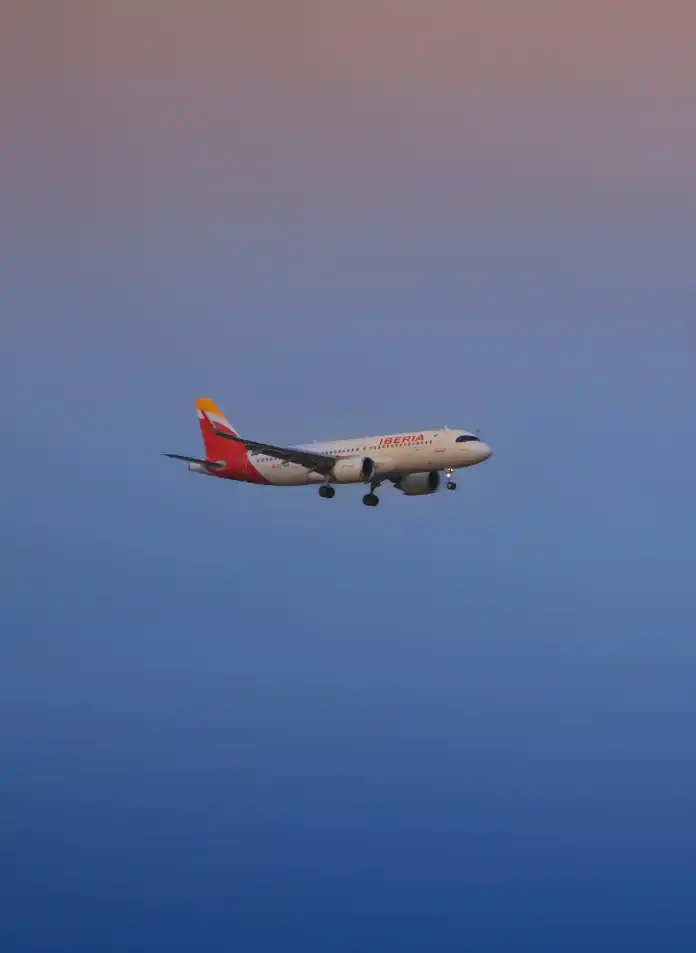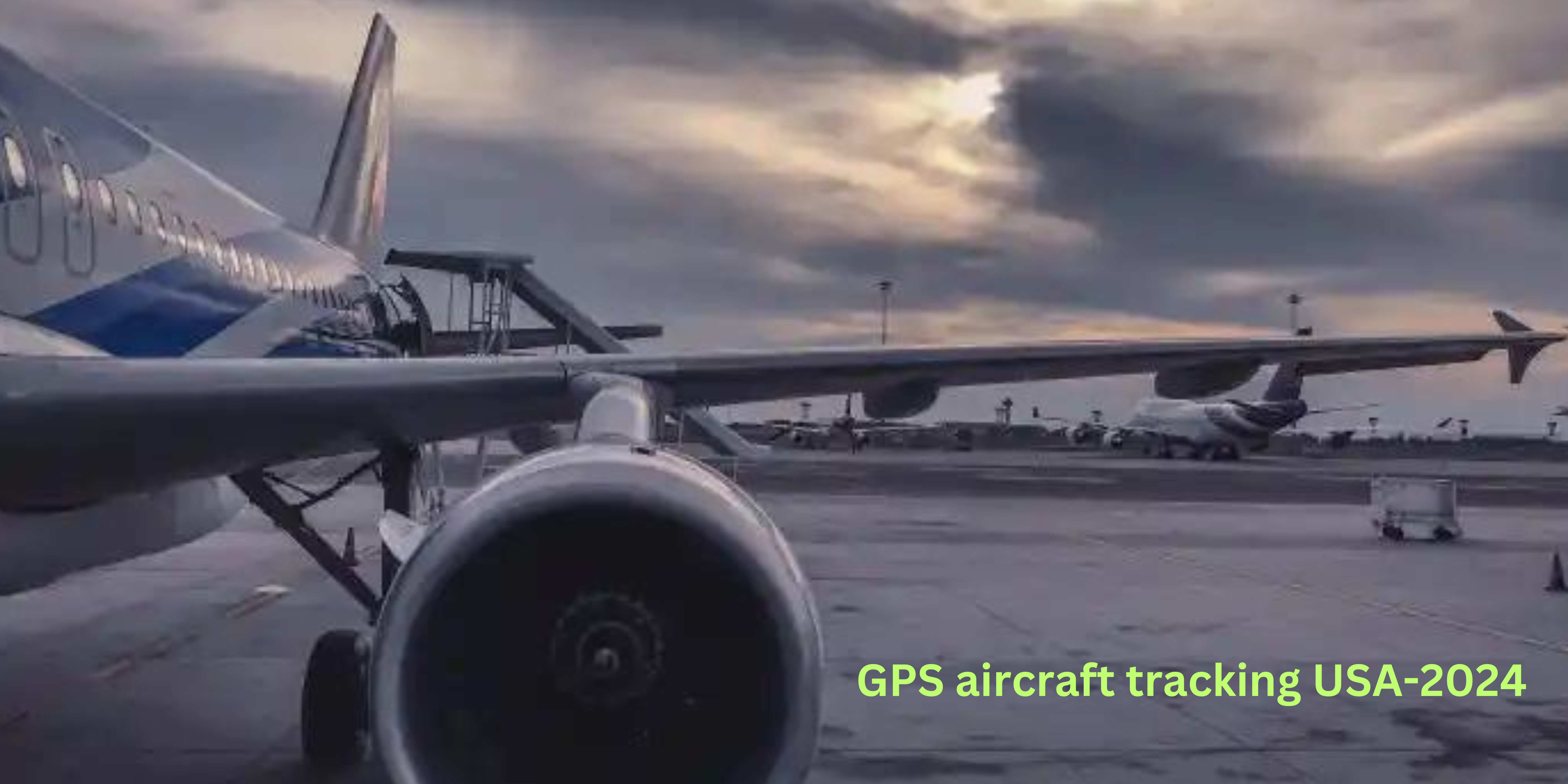GPS aircraft tracking USA-2024
GPS following of airplanes is a strategy for monitoring the specific area of an airplane outfitted with the GPS satellite-based route framework. By speaking with route satellites, exact live information in regards to flight boundaries can be sent to a server situated on the ground. The server can store the flight information, which then, at that point, can be sent through the broadcast communications organization to organizations that wish to break down it.
Networks
The different types of telecommunications networks that are used include:
- ACARS is a mix of the satellite, VHF and the HF network
- The transponder “Mode S” (ADS-B) network
- Satellite-based networks (Global star, Inmarsat, IRIDIUM, Thuraya)
- GSM network GSM Network

Equipment
Certain devices are Avionics components, such as ACARS and ADS-B. In these situations, the receiver and transmitting antennas are typically placed outside of the airframe.
If the devices are not used as avionics components , they need to be totally independent of the aircraft. They are generally installed inside the airframe at a place in which the GPS and communications satellites are easily visible for the gadget, such as by in the the cockpit window. The output signal must be able to pass through the aircraft. Typically, air traffic control authorities are required to adhere to Do-160 to determine audio frequency susceptibility and induced susceptibility.
Authorities categorize non-installed devices to be “transmitting portable electronic devices” (T-PEDS) and, as such, must be turned off during the critical stages in flying. [1]
Applications
Continuous and exact information from GPS airplane following could be made accessible straightforwardly to Air traffic the executives by utilizing Promotions B innovation. This will assist with lessening airspace detachment for airplane. GPS following of airplane additionally permits transporters to screen its armada of planes on ACARS.
This considers the following of airplane over ACARS framework, and grants airplane to be better situated in the occasion a mishap. The data will be utilized to gather ” OOOI” data on developments inside the air terminal and ascertain the flight span. Eventually, GPS airplane following licenses the flight school to screen an educator pilot’s advancement and report the pilot’s flight course a while later.
Active aircraft tracking
There are numerous active tracking aircraft systems on the market today that employ an approach known as the “bread-crumb approach” to SAR. Instead of relying on the emergency locator transmitter that transmits after impact the new technology of the emergency locator is active tracking devices which send periodic position reports at regular intervals.
If the transmitter ceases transmitting on impact, the prior transmissions will provide the last location known to the aircraft, along with its speed along with its direction, and altitude. Tracking as an alternative or a complement to technology of the present has been endorsed by the Coroner of New Zealand. [22
The service of flight tracking that allows the tracking of flight, planes as well as airport activities, usually by using programs..

Overview
The following of flights permits voyagers and the people who get travelers following the trip to decide whether the plane has shown up or is in time, for example, to know when now is the ideal time to go for a flight.
Airplanes are furnished with Promotions B transponders that communicate information, for example, the distinguishing proof of the airplane the GPS directions, position and elevation in radio transmissions. These radio transmissions are gotten from common Promotions B recipients arranged inside the area of the airplane. These recipients are fit for gathering data about flights that are inside radio scope of their area. In this way, the information they accumulate ordinarily is moved to a focal server that gathers takes care of from various individual beneficiaries all over the planet.
Flight following can be coordinated into movement the board and following, which considers more prominent proficiency of movement programming. This sort of following is simply starting to grow however it’s supposed to extend quickly as additional frameworks are associated.
In spite of this advancement, abrupt occasions, for example, unexpected changes in the weather conditions aren’t being recorded by the current flight trackers since they don’t get their information from the actual plane, however from dispatcher focuses that regularly don’t know about the genuine condition of the plane’s situation. [1]
Programming for flight following can be utilized by business administrators to screen their airplane and track whether they separate from the flight course they have consented to. If they are, a caution is given to inform of an expected issue. The sort of programming that is accessible can import and survey overall climate as well as NOTAM data to distinguish any new issues that could create some issues for the flight.
The following list contains flight tracking services.
- Exchange ADS-B
- ADSB Hub
- Aviation Edge
- Flight Aware
- FlightRadar24
- Open Sky Network
- Plane Finder
- Plane radar
- Radar box
- Vari Flight
An radar tracker one of the components of an system of radars system or Command and Control (C2) system that connects successive images of the exact target to trackers. It is particularly helpful for radar systems that reports data from several different targets, or when it is required to blend the data of multiple radars or sensors.
gps aircraft tracking gps history history of gps history of the gps gps origin flight gps tracker aircraft tracking system navstar gps
The role that the radar tracker plays in
An exemplary rotational air observation radar recognizes reverberations from focuses in the loud foundation. It records these identifications (known by the expression “plots”) in Polar directions that address the distance and the bearing that the article is found. Moreover, the commotion produced by the radar recipient can outperform the limit for recognition for the radar’s consistent misleading problem locator, and might be named targets (known as deceptions).
The capability for the radar tracker’s radar is track progressive updates of the radar’s framework (which normally happen each several seconds, when the recieving wire moves) and afterward to distinguish examples of plots which have a place with the specific objective and reject any plots thought as phony problems. Moreover the radar tracker has the ability to use these plots to appraise the speed and bearing for the designated. Assuming there are numerous objectives it is the expectation of the radar tracker to give one track for every objective with track history regularly being utilized to show where the objective is from.
In the event that various radars are connected to a solitary report post Multiread trackers are ordinarily used to screen changes from every one of the radars, and afterward make tracks in light of the blend of distinguished signals. At the point when this is the case the tracks are normally more exact than the ones got from single radars since additional identifications can be utilized to ascertain the tracks. Aside from joining plots, staying away from phony problems, and assessing the speed and heading too, the radar tracker capabilities as a channel that is, blunders in individual estimations of radar are smoothed. The radar tracker applies a smooth bend on the plots that are accounted for, and, assuming that it is done appropriately will work on the nature of radar frameworks. Multisensory trackers expand the possibility that the radar tracker is multi-radar, permitting the coordination of reports from different sorts of sensors which incorporate radars, optional observation radars (SSR), ID companion or adversary (IFF) frameworks and electronic help measures (ESM) data.
A radar track can typically include the following details:
- Position (in three or two dimensions)
- Heading
- Speed
- Unique track number
Furthermore, and based on the tracker’s or application’s level of sophistication, the track may comprise:
- Civilian SSR Modes A, C, S information
- Military IFF Modes 1 2 3 4 and 5 information
- Information about the call sign
- Information about the reliability of your track or information on uncertainty

General approach
There are numerous mathematical algorithms that are used to create the radar tracker, with different degrees of sophistication. They all follow steps that are similar to these each time the radar is updated:
- Associate a map of a radar to an already existing track ( plot to track link)
- Update the track using this most recent track map ( track smoothing)
- Create tracks by staking out new plots that aren’t associated with tracks already in use ( track initiation)
- Eliminate tracks that are not updated, or determine their current location using the speed and heading of the track previously. ( track maintenance)
The main stage is refreshing tracks by presenting new plots. Trackers be assessing a few viewpoints during this stage that include:
- an explanation of how radar measurements relate to the coordinates of the target
- The errors in radar measurements
- A model of the target’s the target’s movement
- imperfections within the mathematical model for the target’s errors in the model of the target’s
Using this data utilizing this data, the radar tracker attempts to monitor the objective by making an unweighted normal of the latest revealed position of the radar (which isn’t sure of its precision) as well as the last anticipated area of the objective by the radar tracker (which likewise contains obscure mistakes). The following issue is particularly hard for focuses on that have eccentricism in their movements (for example model of target developments that are not known) and non-Gaussian estimations or models that are not straight, non-direct connections between the deliberate qualities and the objective directions as well as identification despite dispersed mess as well as deceptions.
Certifiable the radar tracker for the most part experiences a blend of every one of these elements which has prompted the production of a more modern calculation to settle the issue. On account of the need to fabricate radar tracks progressively normally for many targets at the same time The arrangement in radar tracker calculations has for the most part been limited by the processing power accessible.
Plot for tracking the association
In this stage of processing the radar tracker attempts to identify which plots should be used to update the tracks. In some approaches the plot could be used only for updating one track. However, in some approaches, plots are able to update multiple tracks, while recognizing the uncertainty in determining to which track the plot is a part. In either case, the initial step is to update all the tracks in existence to current times by anticipating their future location based on the most recent estimate of state (e.g. position, heading, speed, acceleration, etc.) and the assumed movement model (e.g. constant velocity, constant acceleration, etc.). After updating the estimates and analyzed the data, you may attempt to connect the plots with tracks.
This can be accomplished in various methods:
By making the expression “acknowledgment door” around the ongoing track, and picking:
The nearest plot of land in the door to the expected spot the plot that is nearest to the anticipated position
The most remarkable plot in the door
With a factual methodology like by utilizing measurable techniques, similar to the Probabilistic Information Affiliation Channel (PDAF) or the Joint Probabilistic Information Affiliation Channel (JPDAF) which decides the most probable area for the plot in view of a measurable blend of every single imaginable plot. This strategy has been shown to be successful in the presence with high radar commotion.
After a track is connected to a plot it is moved into the stage of smoothing and the track prediction and plots are combined to give an updated, smoothed estimate of the desired location.
After this procedure is completed After this process is completed, some plots will not be linked to existing tracks, and a lot of tracks will not receive updates. This is the reason for the process of track initiation as well as maintenance of tracks.

Track start
Track Commencement is the method involved with making a spic and span radar track utilizing an inconsequential radar plot. At the point when the tracker’s initially turned on, the primary radar maps are all used to produce new tracks. Notwithstanding, when the tracker has been running and the plots are being used, just those which aren’t reasonable to refresh tracks are used to produce new tracks. Another track is ordinarily delegated during the time spent being conditional until the plots produced by later radar refreshes have been effectively connected to the track.
The tracks that are speculative aren’t displayed to the administrator and they act as a method for preventing bogus tracks from appearing on the screen with the outcome of a deferral while revealing the principal report of the track. After various updates are gotten and affirmed, the track can be seen and introduced before the client. The most usually utilized basis to advance a track that is provisional to a confirmed track, is to keep of-N guideline,” which is the “M-of-N rule”, which requires that, during the keep going N radar refreshes essentially M plots ought to have been associated with the track with N=5 and M=3 being the most well-known numbers. The more complex strategies could utilize the factual technique where a track is checked when for instance the covariance grid of its track tumbles to a particular size.
Track maintenance
Maintenance of track is the procedure that determines made on when to end the existence of a track. If a track is not connected to a plot in the plot-to-track association phase, it is possible that the target could no anymore exist (for instance, an airplane might have landed or flown over radar coverage). Or, it could be that there is a possibility that the radar been unable to locate the target during that update, but it will see it once again in the following update. The most common methods for deciding which track to stop can be based on:
The objective has not been seen in the last M sequential updates (commonly M=3 or more)
If the objective was not seen in the past M of N, the latest updates are a decent chance to refresh.
In the event that the track vulnerability of the objective (covariance grid) has expanded past the limit of a specific sum
gps aircraft tracking gps history history of gps history of the gps gps origin flight gps tracker aircraft tracking system navstar gps
Smoothing of tracks
This significant step is where the latest track expectation is then integrated into the related diagram to give a refreshed, more precise gauge of the ideal state and a refreshed assessment of the mistakes in the forecast. There are various calculations, differing in degrees of intricacy and computational weight which can be used to achieve this.
Alpha-beta tracker
An early following method that utilized the Alpha beta channel that depended on the revision of covariance blunders, and the utilization of a non-moving, consistent speed target model that could be refreshed to reflect tracks.

Kalman filter
The reason that Kalman Channel is to Kalman channel is to decide the current condition (for example the speed, heading, and perhaps speed) of the designated article, and gauge the ongoing status of the objective in the setting that the most recent radar estimations are taken. While making its expectations, the radar additionally changes its own assessment of vulnerabilities (for example botches) in the expectation. Then it makes a weighted amount of this state forecast as well as the latest evaluation of state including the estimation mistakes that are referred to the radar as well similar to possess vulnerability in model of movement of the objective.
Then, at that point, it overhauls its assessment of the vulnerabilities in the state gauge. One of the key suspicions in the numerical premise that is utilized in Kalman channel is that Kalman channel lies in the estimation conditions (for example the connection between estimation of the radar and its condition of the objective) as well as the state conditions (for example the conditions used to anticipate the future state in light of what is presently set up) can be depicted as equivalent to straight.
The Kalman channel assumes that the mistakes in estimation from the radar the blunders in its model of movement target and any blunders it makes in its state assessment are every one of the zero-implies, and have known covariance. This infers that this multitude of wellsprings of mistakes could be addressed as the covariance network. The numerical premise that is utilized in the Kalman channel accordingly manages the proliferation of these covariance frameworks and utilizing them to build the weighted measure and aggregate.
At the point when the objective’s moves in a manner that is steady with the model that is utilized to compute it There is a propensity for the Kalman channel to be “careless” of its own expectations, and ultimately dismiss the radar perceptions. In the event that the objective moves monitoring the move can’t. It is hence a typical practice while utilizing the channel to build the size of the covariance lattice of state gauges just barely at each update to stop this
Multi-hypothesis tracker (MHT)
The MHT permits the track to be refreshed with more than one plot each update, making many tracks. At the point when each new radar signal is gotten,, every conceivable track could be refreshed directly following each update. In time the track can fan out into different potential headings. The MHT decides the probability of each track, and typically just records the most probable of tracks. Because of the way that PCs have restricted limit and memory as a general rule, the MHT ordinarily incorporates a strategy for killing the most far-fetched conceivable track refreshes. The MHT is intended for situations where the movement model is very shaky, as all conceivable track refreshes are thought about. Along these lines, it is broadly used to tackle issues of following ground focuses for airborne ground observation (AGS) framework.
Interacting multiple model (IMM)
IMM is an assessor that can be used related to MHT and JPDAF. IMM utilizes different Kalman channels that work simultaneously, utilizing a similar model to distinguish targets movement and mix-ups. The IMM is an ideal weighted amount of result of the different channels and can rapidly adjust to the objective’s developments. Similarly that MHT or JPDAF deals with the following and affiliation An IMM helps MHT or JPDAF by giving a separating assessment of the place of the objective.
Nonlinear tracking algorithms
Non-linear tracking algorithms utilize the non-linear filter to handle situations in which the measurements don’t have a linear relation to track’s coordinates when the errors are non-Gaussian or models for motion updates are not linear. The most commonly used non-linear filters include:
- the Kalman filter that is the Extended Kalman filter.
- Unscented Kalman filter Unscented Kalman filter
- the particle filter

The Extended Kalman filter (EKF)The Extended Kalman filter (EKF)
EKF is an augmentation of the Kalman channel. EKF is an augmentation of the Kalman channel to deal with circumstances where the connection between the estimations of radar and the track facilitates or the track arranges , and the movement model are not straight.
In this case the connection among measures and the present status follows the shape the condition h = f(x) (where the h esteem is the estimation vector while x addresses the ideal state, and the f(.) is the capability that associates with the two). The connection among future and present state follows the recipe x(t+1) is g(x(t)) (where x(t) addresses the present status at the time t and the capability g(.) will be the condition that figures the state to come in).
To manage these non-linearities the EKF works on the two nonlinear conditions by utilizing one of the terms from the Taylor series and afterward treat the issue similarly as the conventional straight Kalman channel issue. While reasonably direct it is feasible for the channel to separate (for example gradually performs all the more inadequately) if the state gauge of the situations linearized is feeble.
The scentless Kalman channel, as well as the molecule channels endeavor to resolve the issue of linearizing the conditions.
Instinctive Kalman filter (UKF)
UKF is a variety of the UKF looks to work on the EKF by eliminating the prerequisite to linearize the estimation as well as state conditions. It gets rid of linearization by introducing the covariance and mean data as the type of a bunch of focuses which are alluded to as sigma point. The sigma focuses are the dispersion that has a predetermined covariance and mean are then straightforwardly proliferated through the non-direct conditions and the five coming about examples are utilized to compute a new middle and change. This method doesn’t confront any of the troubles of disparity due the absence of linearization however holds the computational facilitate that is normal for EKF.
Particle filter
It is conceivable that the molecule channel can be seen as a speculation of UKF. It doesn’t make presumptions about the dispersions of mistakes that are integrated into the channel, and furthermore doesn’t need that the conditions be straight. All things considered, it makes an immense measure of irregular conceivable state (“particles”) that sends the “haze of particles” through the situations, which brings about a completely unique arrangement of particles in the result.
The subsequent molecule dispersion can be utilized later to compute a method or difference, or some other proportion of factual importance is required. The aftereffects of the measurements are then used to create the arbitrary example of particles to be utilized for the following time. The molecule sift remains through in its ability to deal with the multimodality of dispersions (for example conveyances in which it is conceivable that the PDF contains a few pinnacle). Nonetheless, it’s incredibly computationally serious and right now not appropriate for most certifiable time sensitive applications.

gps aircraft tracking gps history history of gps history of the gps gps origin flight gps tracker aircraft tracking system navstar gps
aircraft tracking,tracking,flight tracking,aircraft,track aircraft around ukraine,track aircraft,track ukrainian aircraft,track military aircraft,real time aircraft flight tracking system,track ukraine military aircraft,flight tracking live,military aircraft ukraine,military aircraft round ukraine,flightradar24 live flight tracking,how to track military aircraft round ukraine easily,how to track aircraft,airplane tracking,ip tracking
car insurance,insurance,auto insurance,cheap car insurance,best car insurance,car insurance explained,car insurance online,vehicle insurance,types of car insurance,third party insurance,cheapest car insurance,best auto insurance,insurance quote,think insurance,insurance advice,best car insurance in india,how to lower insurance,how to get cheap car insurance,motor insurance,online insurance,how insurance works,car insurance companies
motorcycle accident attorney,motorcycle accident attorneys,motorcycle attorneys,motorcycle accident lawyers,russ brown motorcycle attorneys,attorney,motorcycle accident,georgia motorcycle accident attorney,motorcycle accident lawyer california,personal injury attorney,motorcycle accident lawyer,motorcycle accident lawyers california,motorcycle accident lawyers ca,motorcycle,atlanta motorcycle accident attorney,injury attorney,motorcycle attorneys ct
cheapest car insurance, comprehensive car insurance, best car insurance for you, vehicle insurance, policybazaar car insurance, third party insurance, car insurance price, car insurance scams, car insurance rates.











